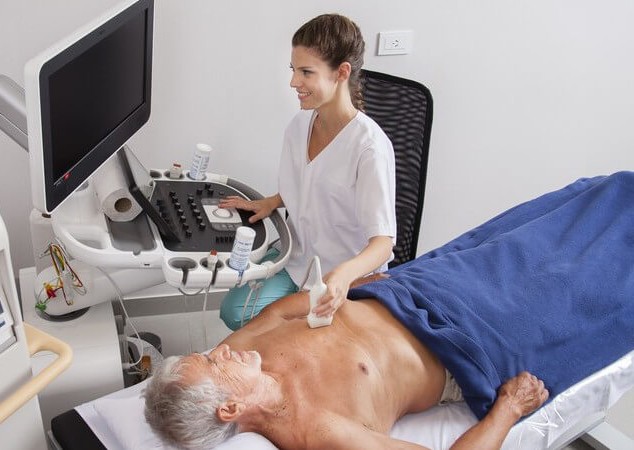Echocardiography (ECHO) is a non-invasive examination of the heart using an ultrasound probe.
This examination can provide the examiner with a complete picture of the structure and function of the heart, heart chambers and heart valves and any heart failure can be visualized.
Echocardiography works on the principle of recording ultrasound reflections of heart tissue and thus creates an accurate picture of heart function, the speed of movement of heart structures and the ability to calculate heart function parameters from measured values.
It is considered the gold standard of modern cardiology and forms an irreplaceable part of cardiological examination.
In our outpatient clinic, we conduct this examination with the help of the most modern devices, thanks to which it is possible to detect even the smallest cardiac dysfunction.

The heart and its individual parts (walls, partitions, flaps, vessels) have different abilities to reflect ultrasonic waves, thanks to which the ultrasound device monitor displays their boundaries and structure. Thanks to the color Doppler display of the blood flow in the heart, it is possible to find out what the blood flow in the heart is doing during its operation.
Darker shades on the monitor show slower blood flow, lighter shades show fast blood flow. During the ultrasound examination, the doctor gets an image of the thickness of the heart wall, the size of the atrium and ventricles of the heart, the diameters of the valves and the large vessels in the heart. He also sees on the monitor the mobility of individual parts of the heart, the ability to relax the heart muscle (contract and expel blood), but also the activity of the valves, the speed and amount of blood flowing, and also the formation of vortices in the heart cavities.
